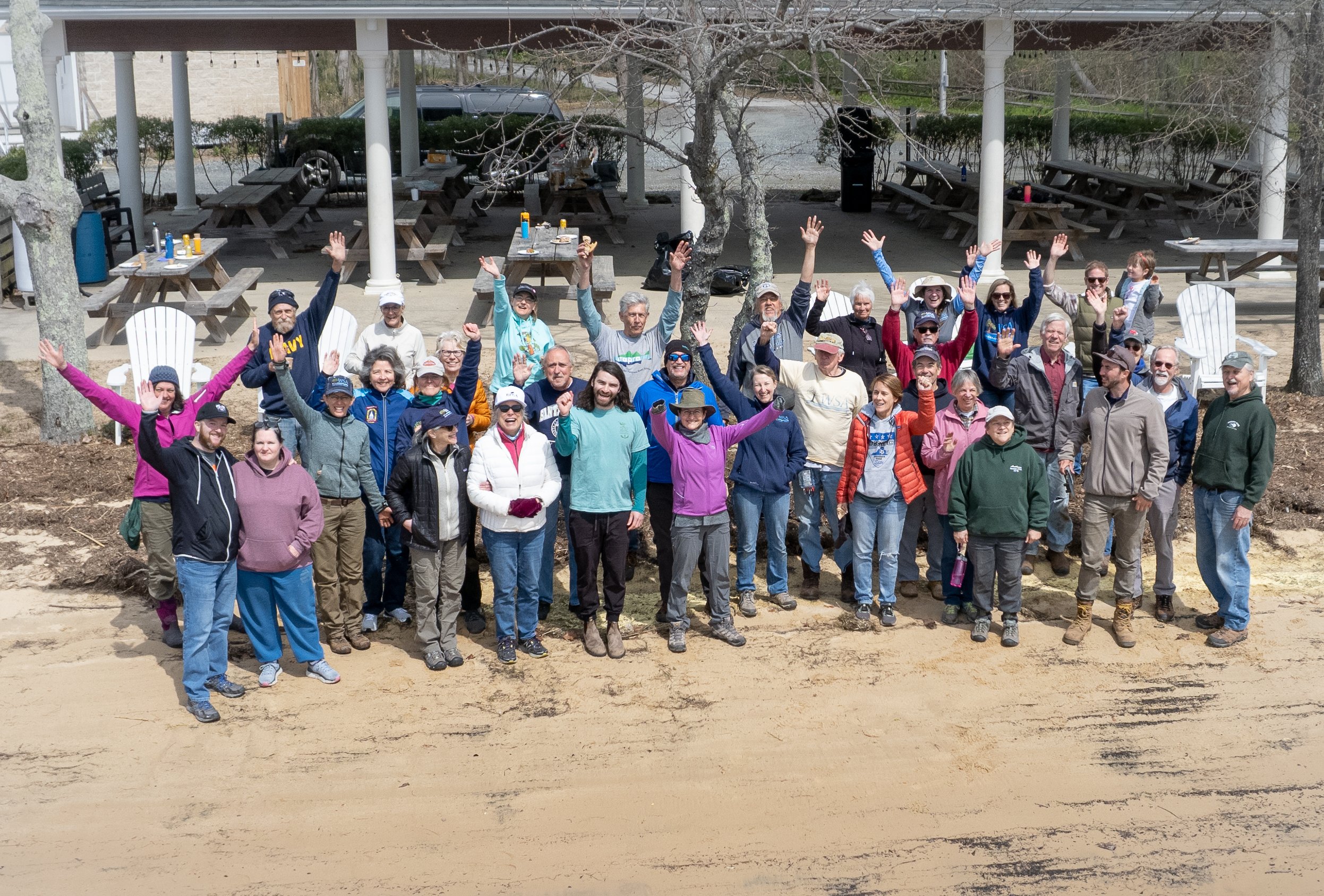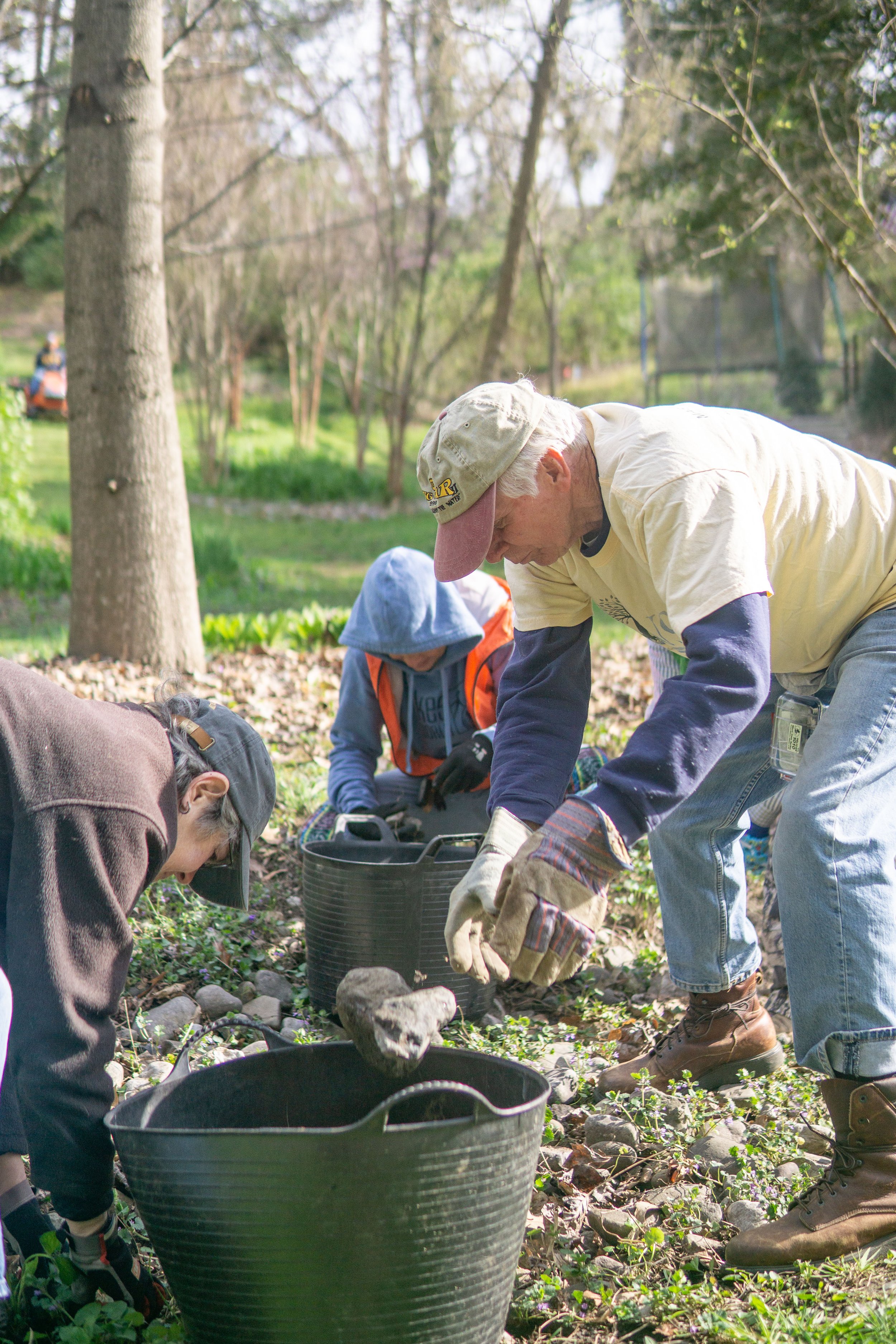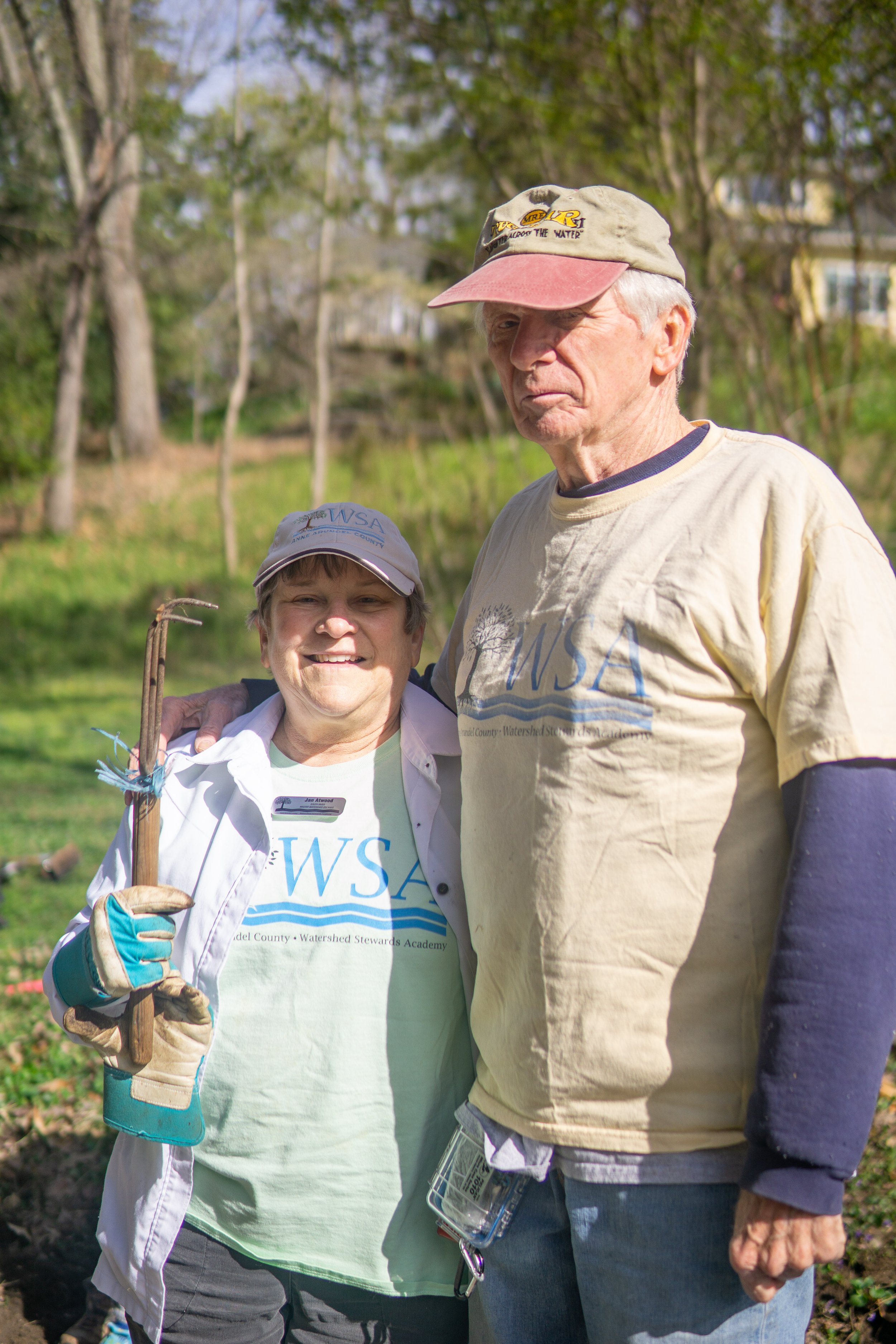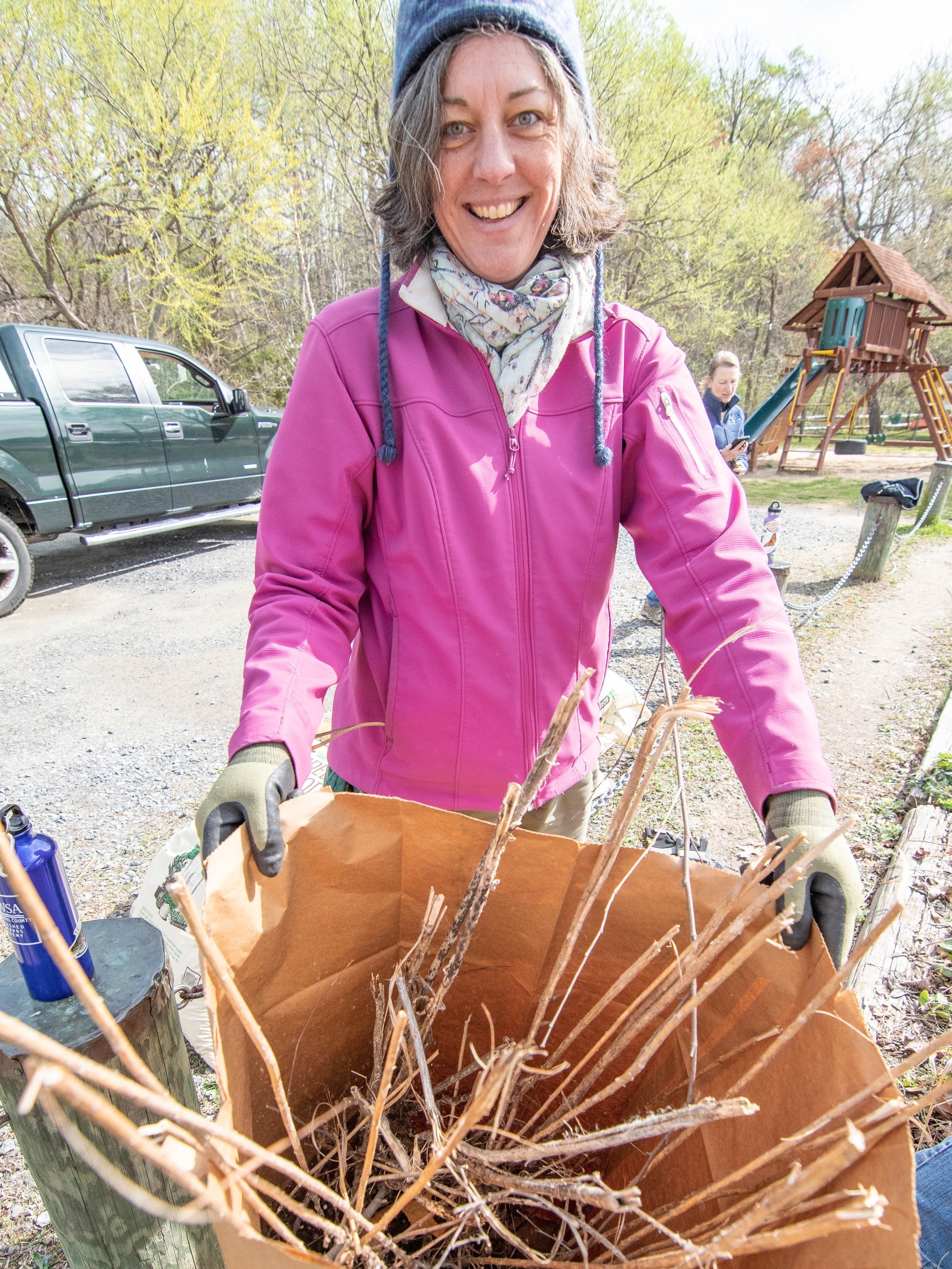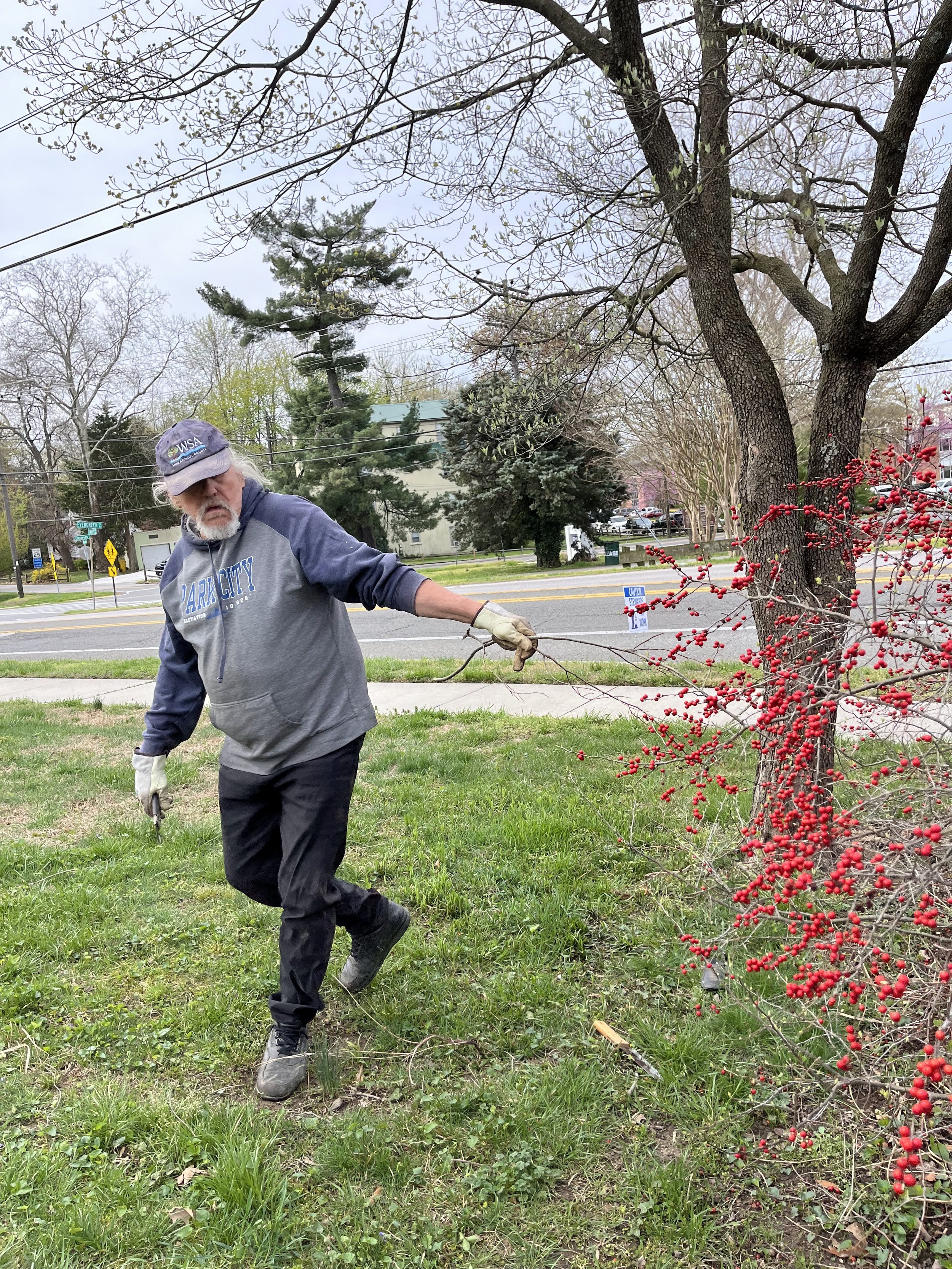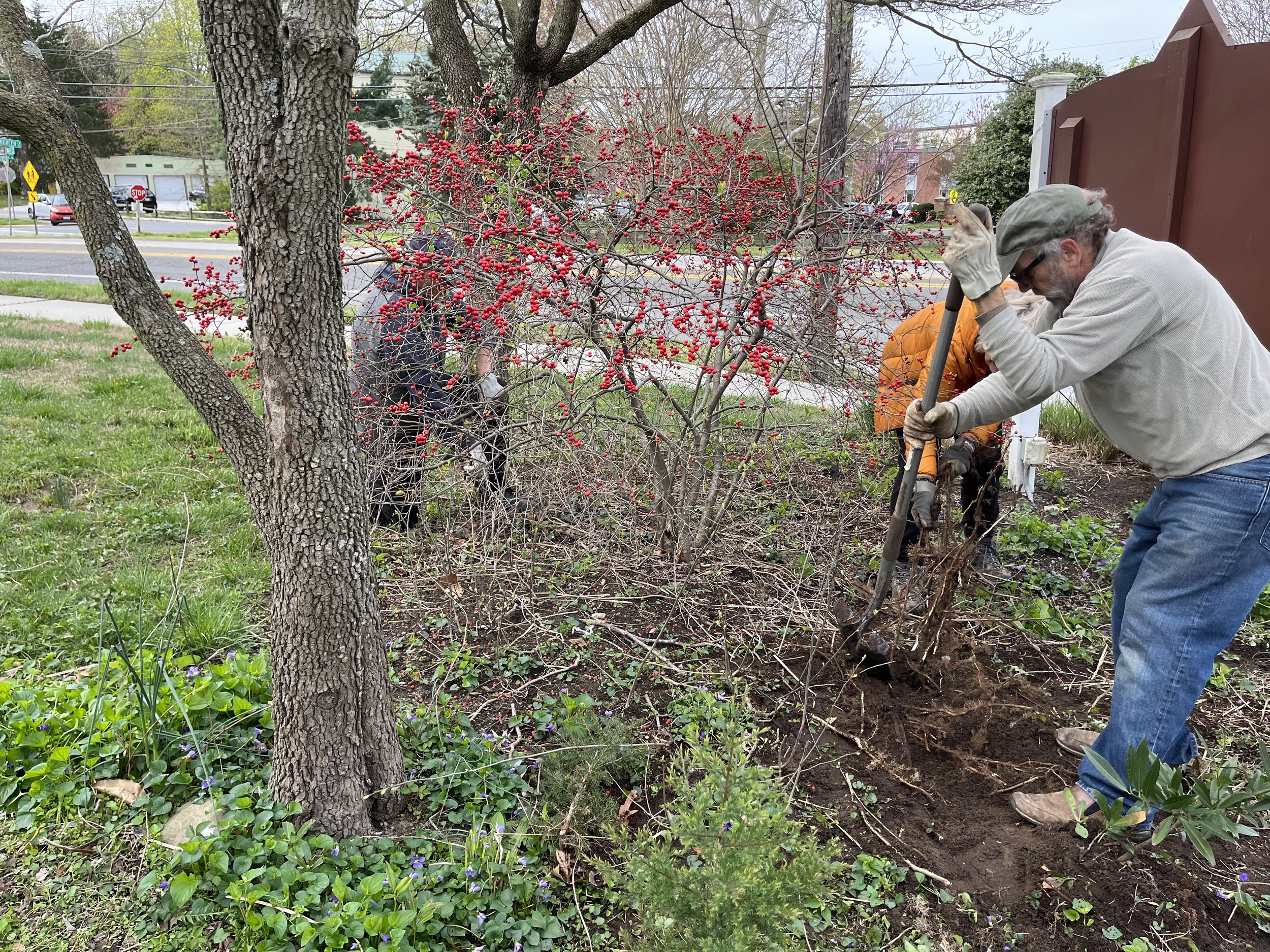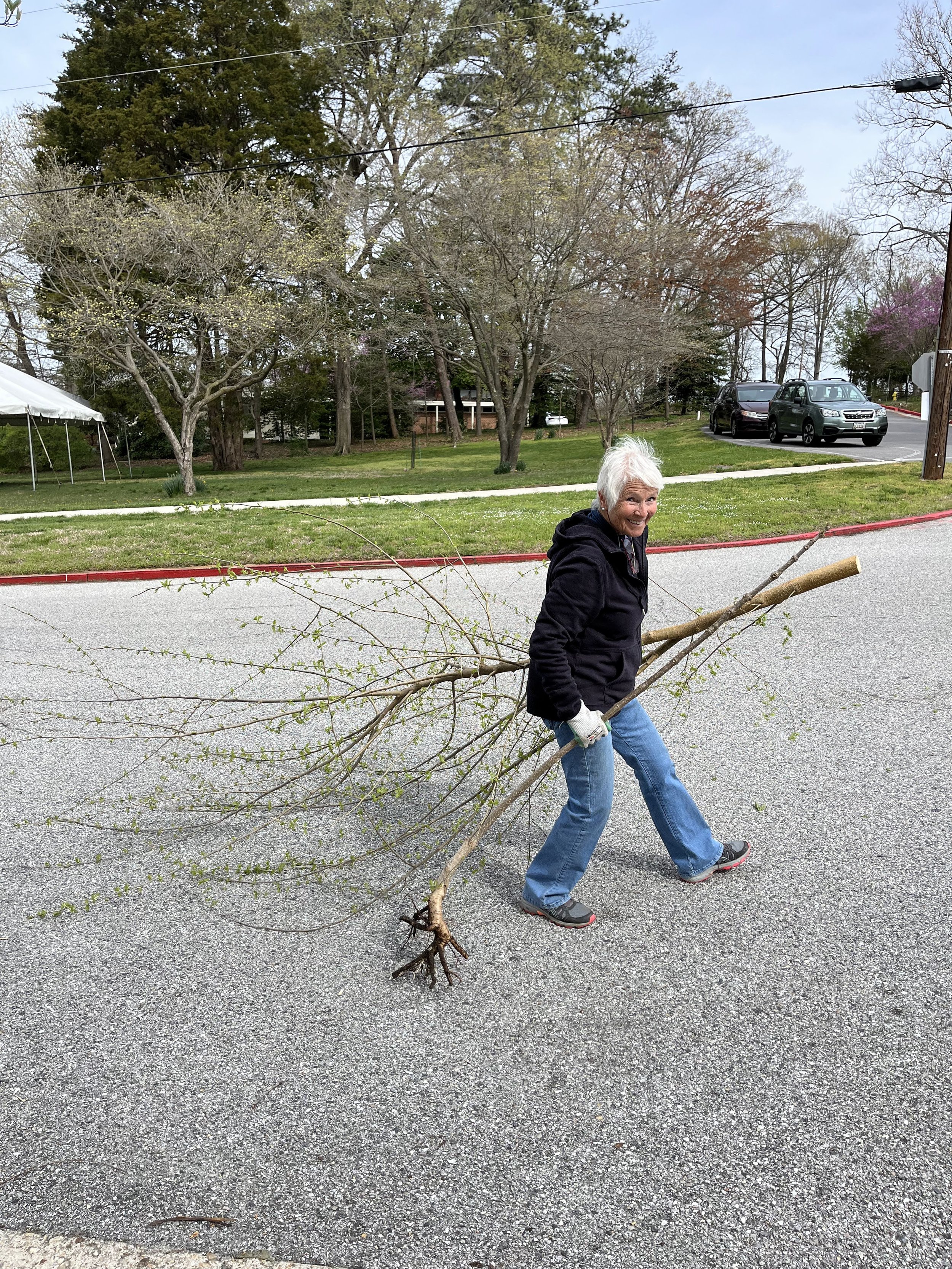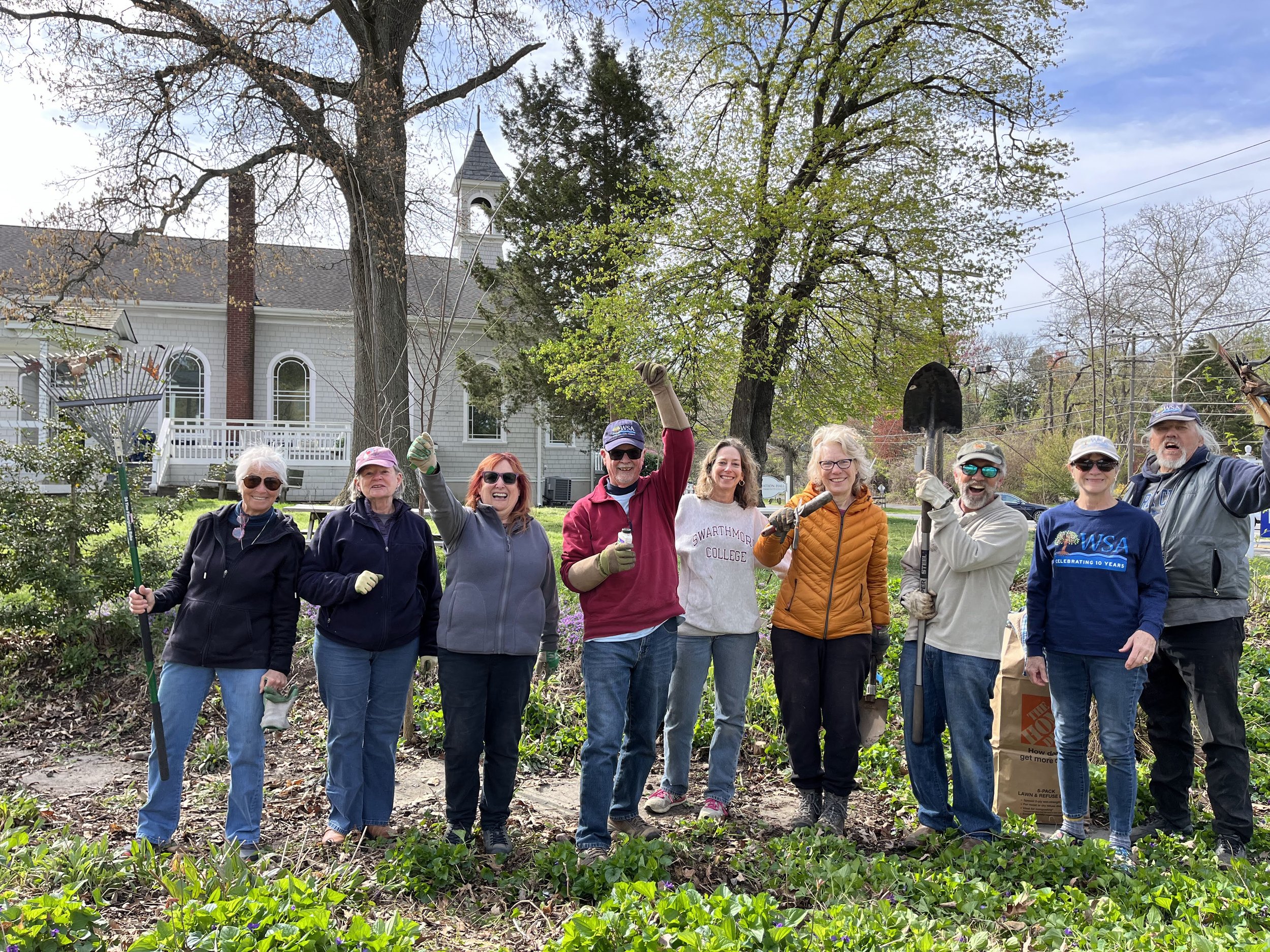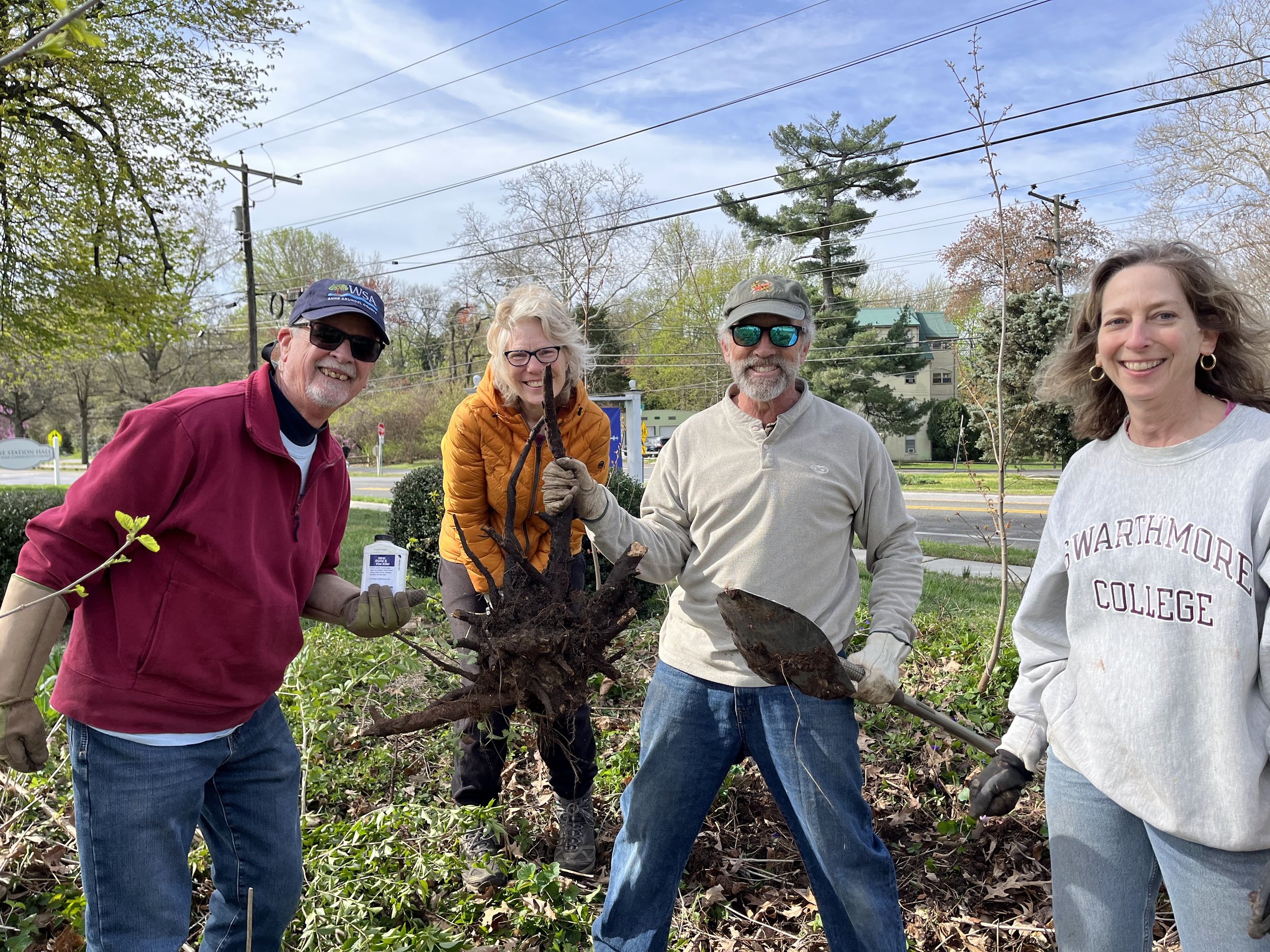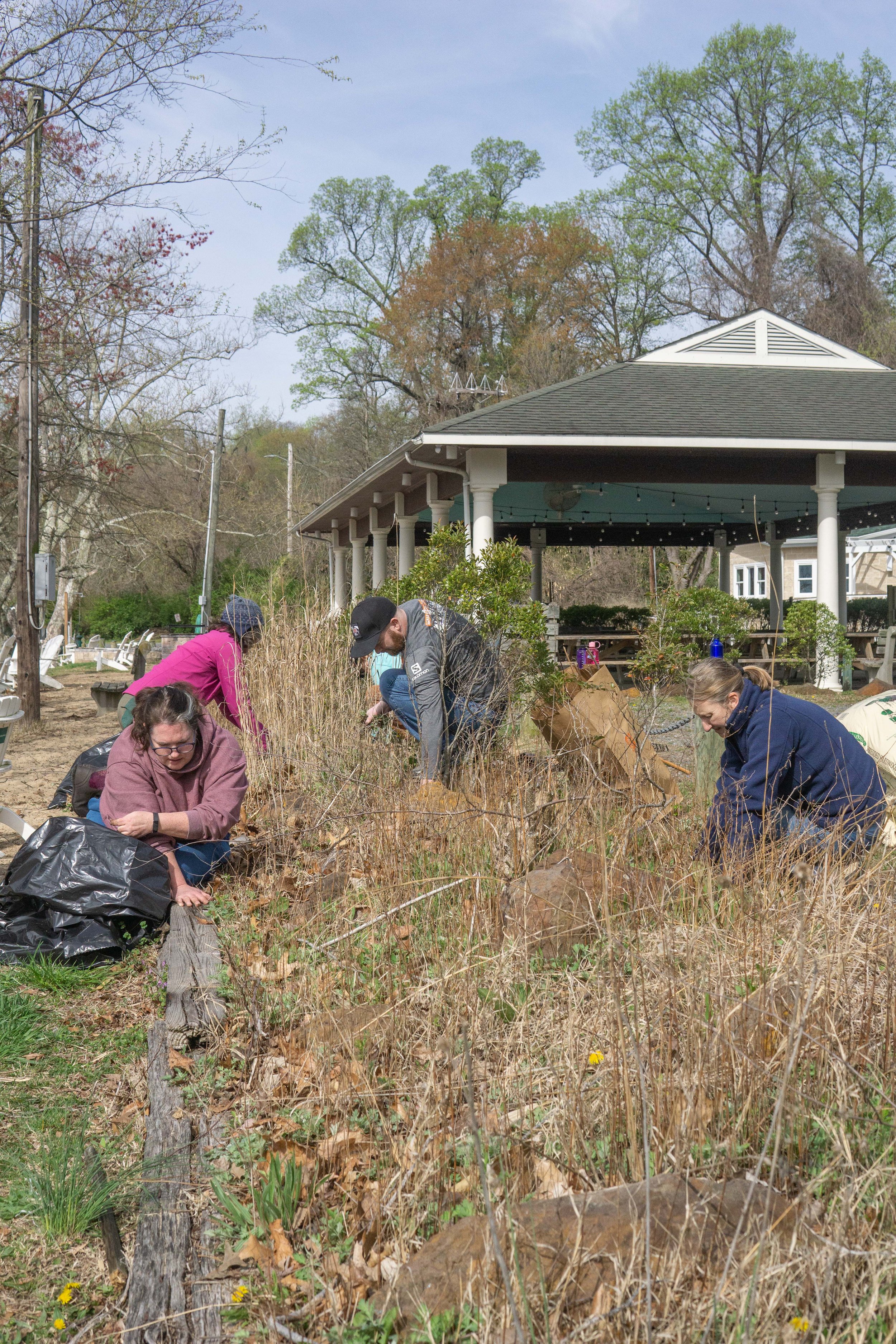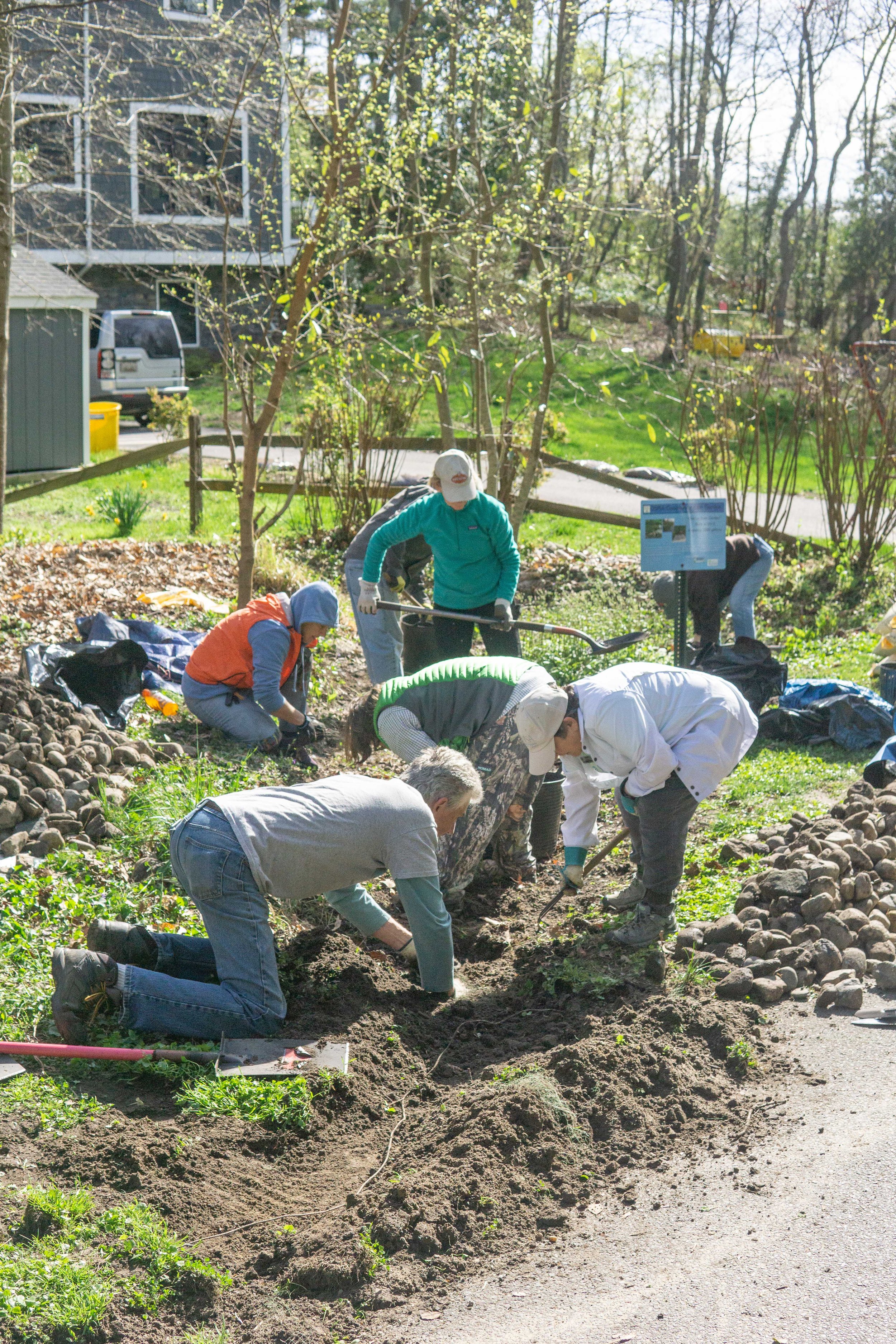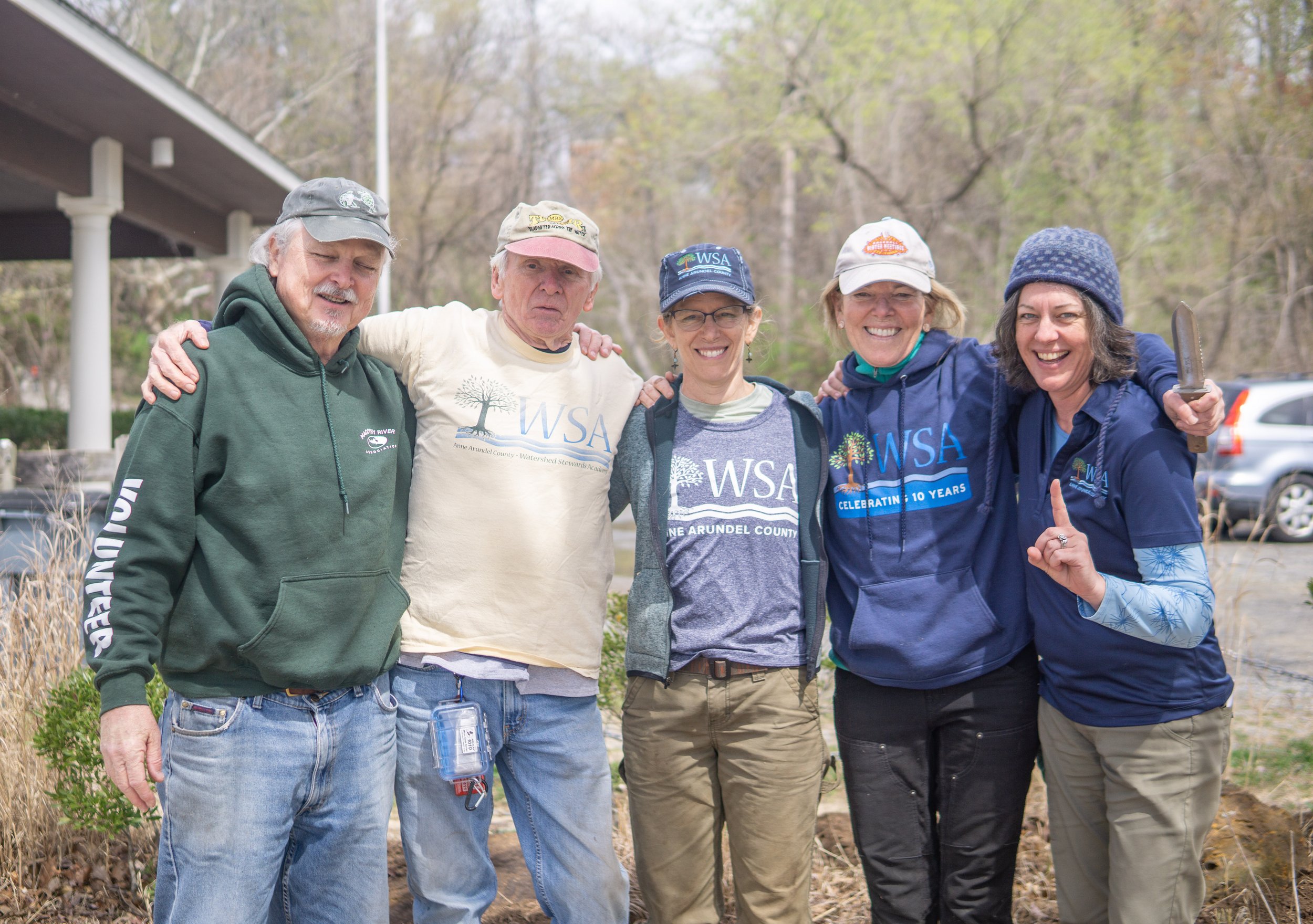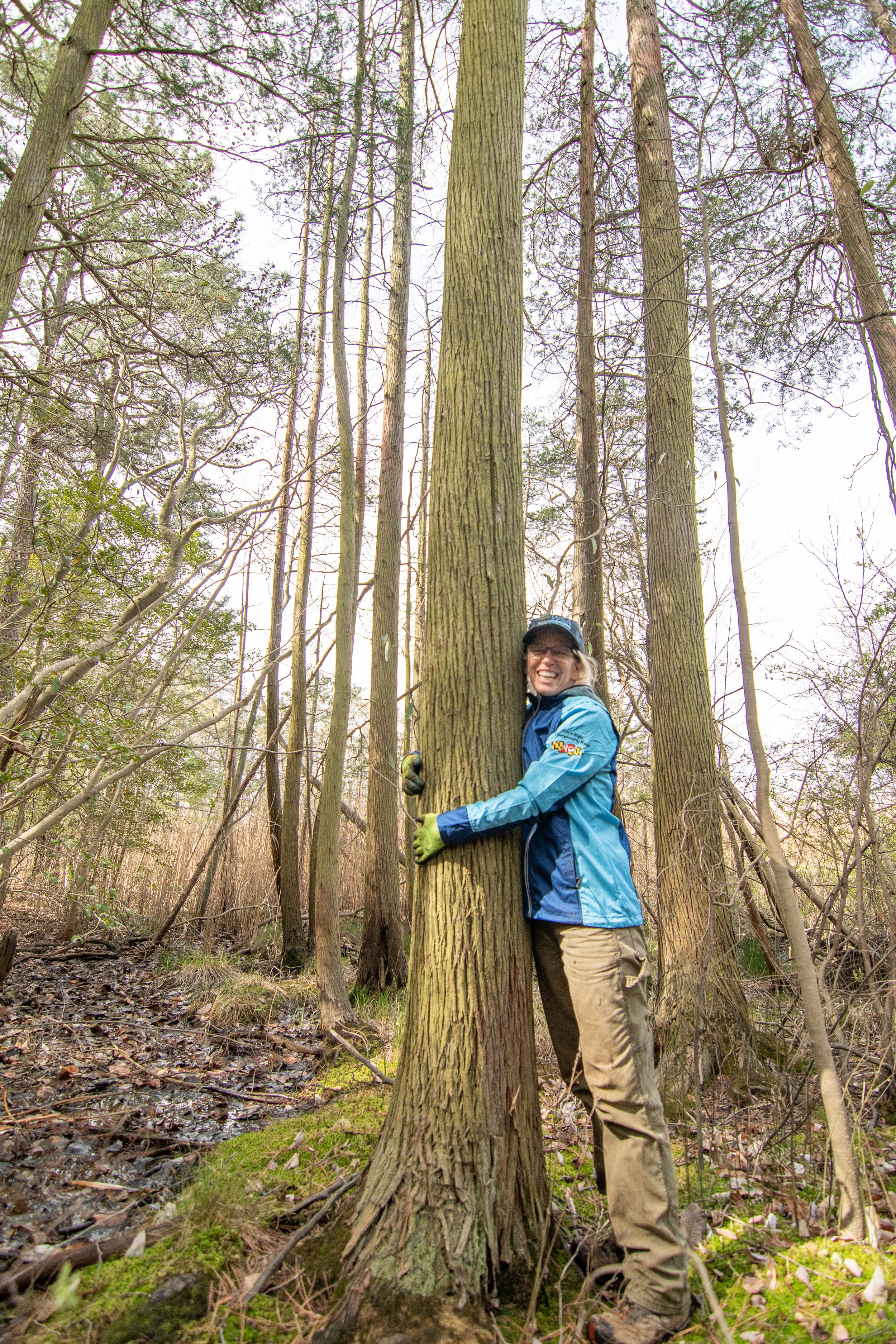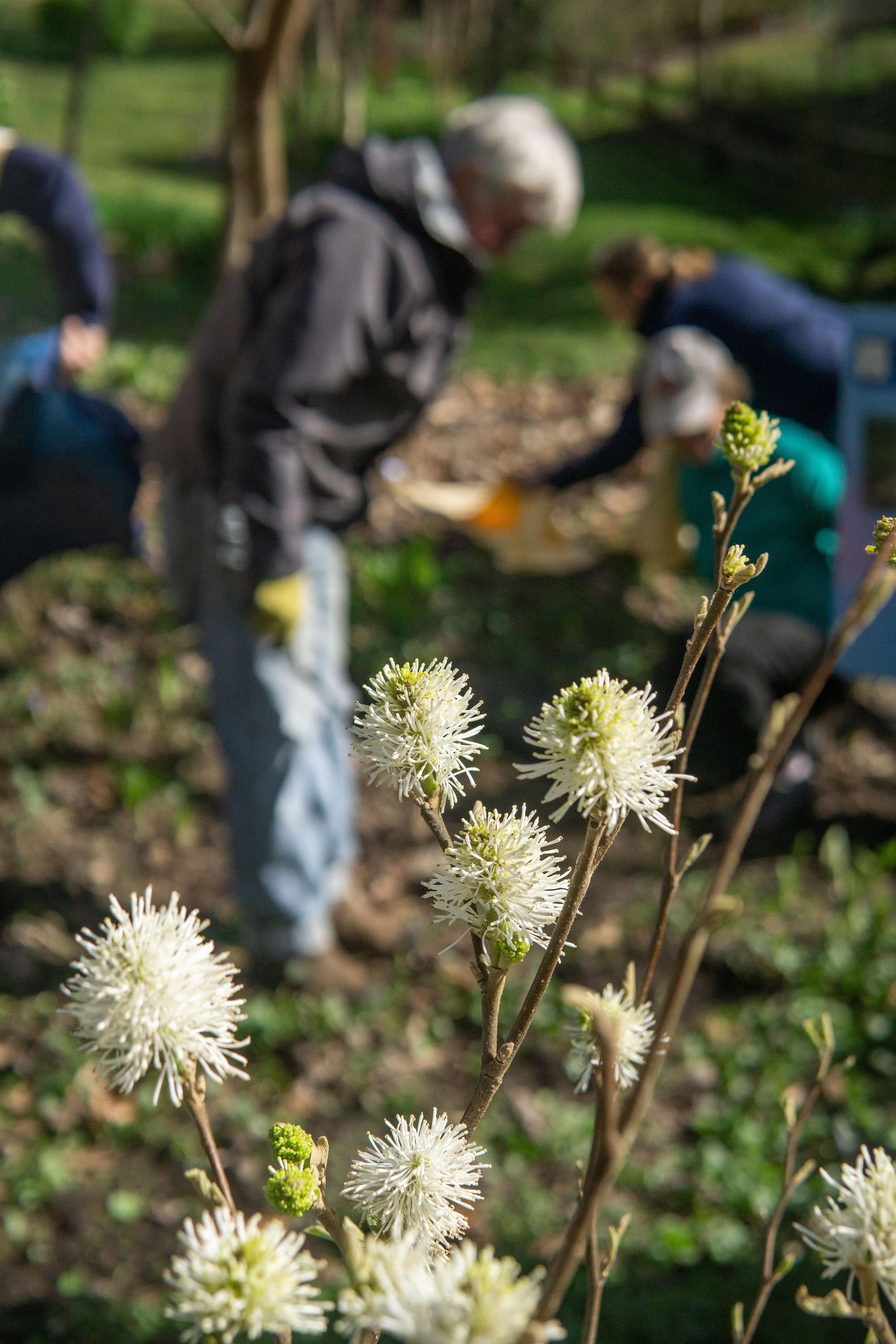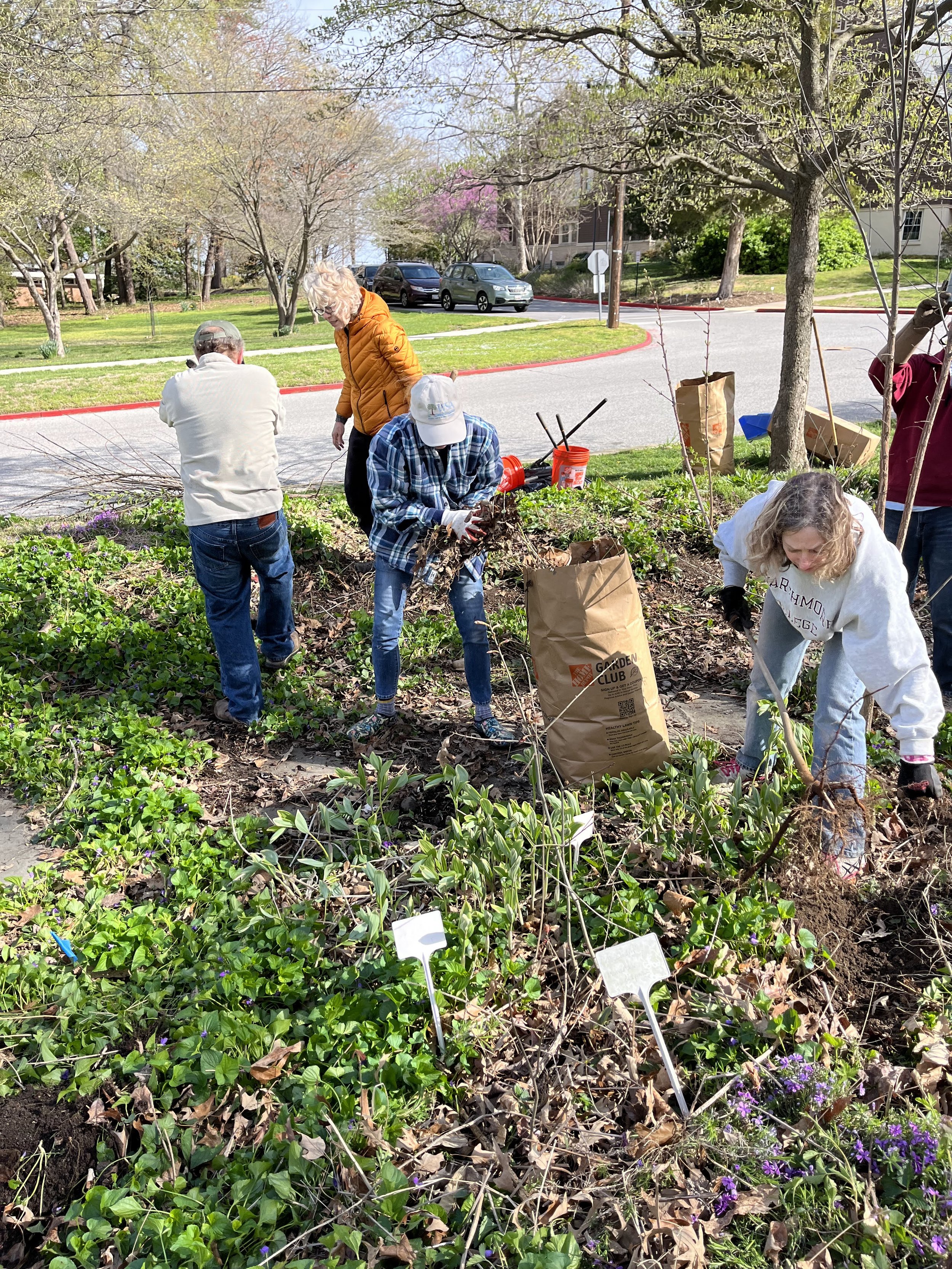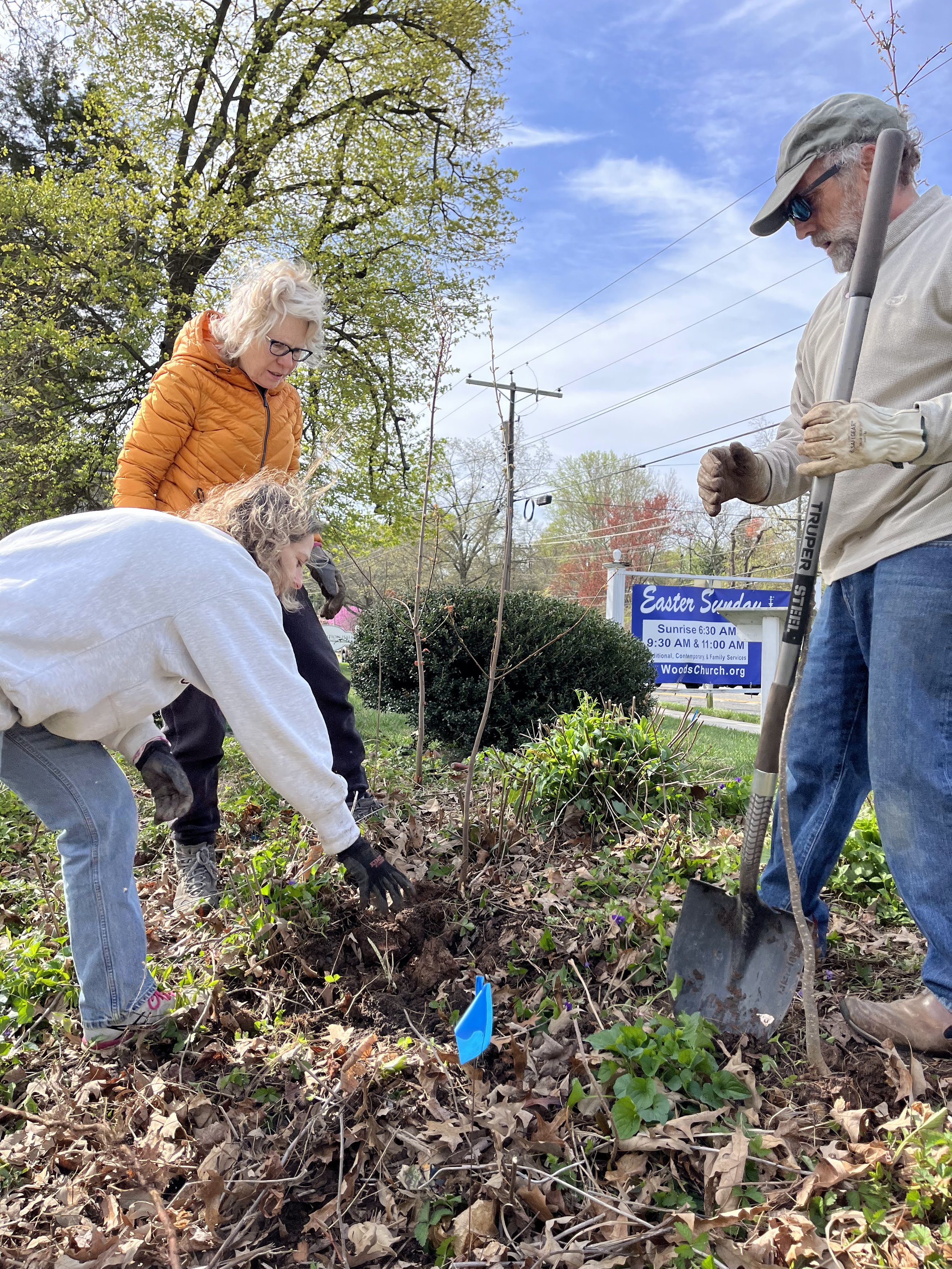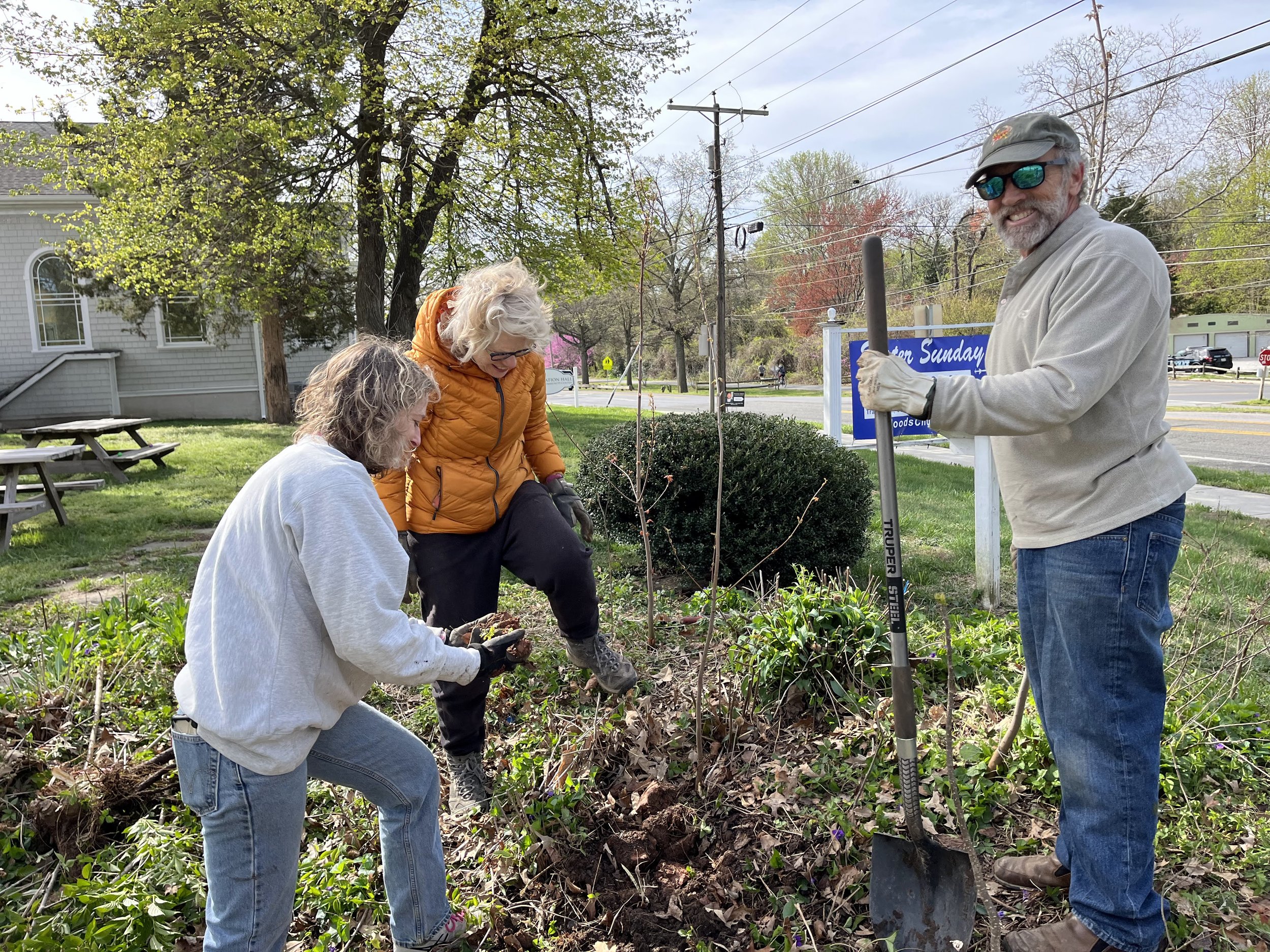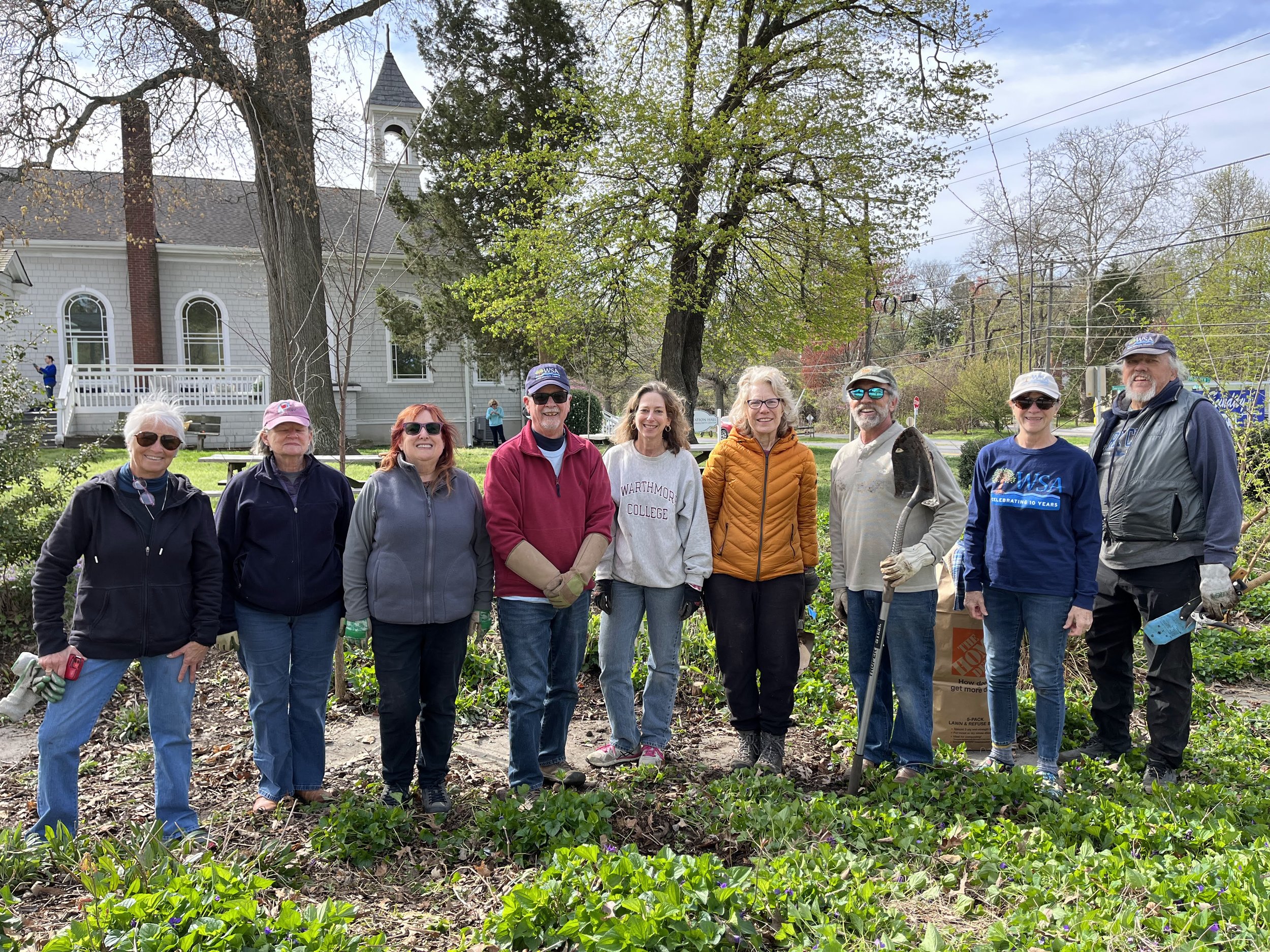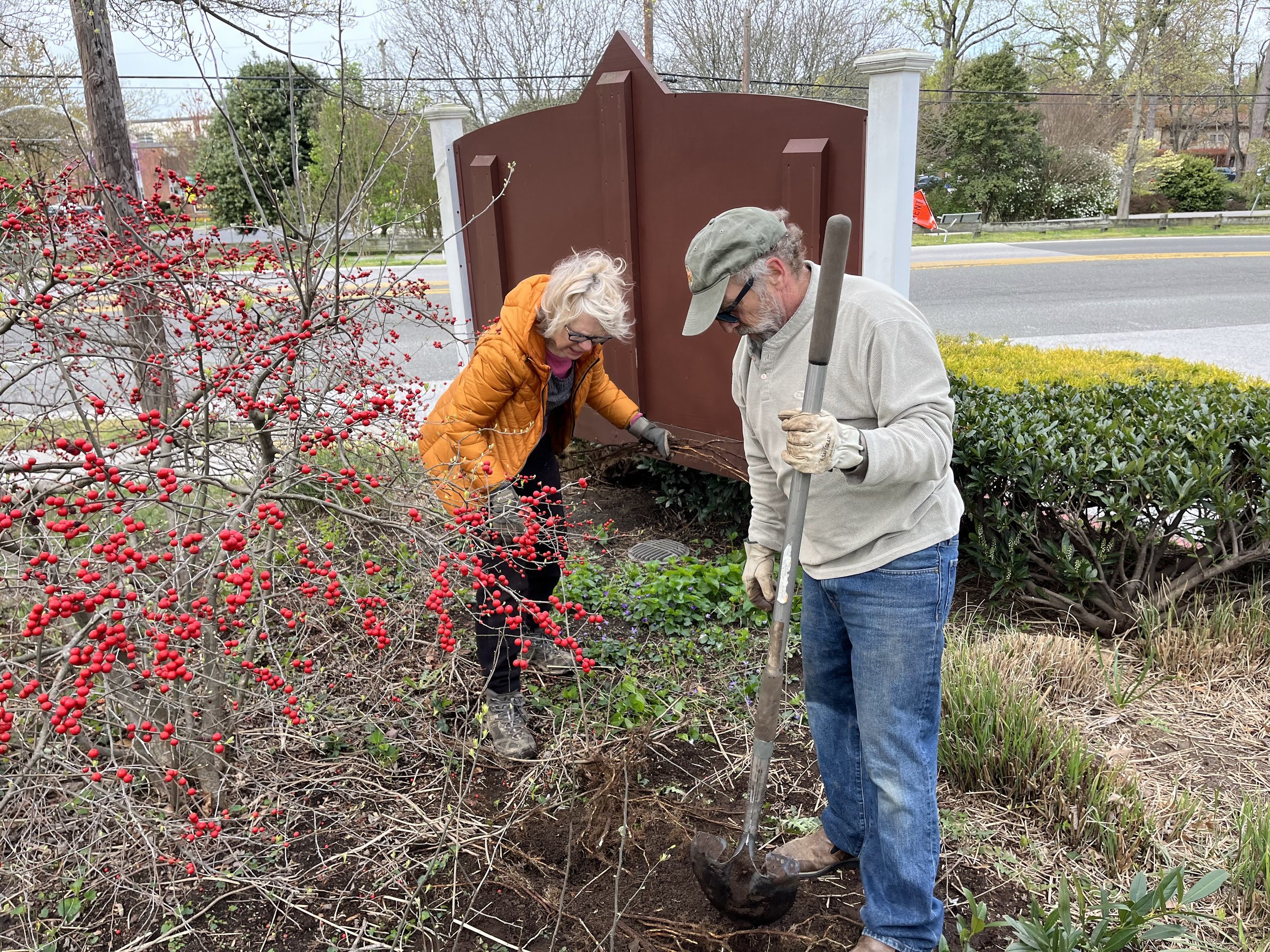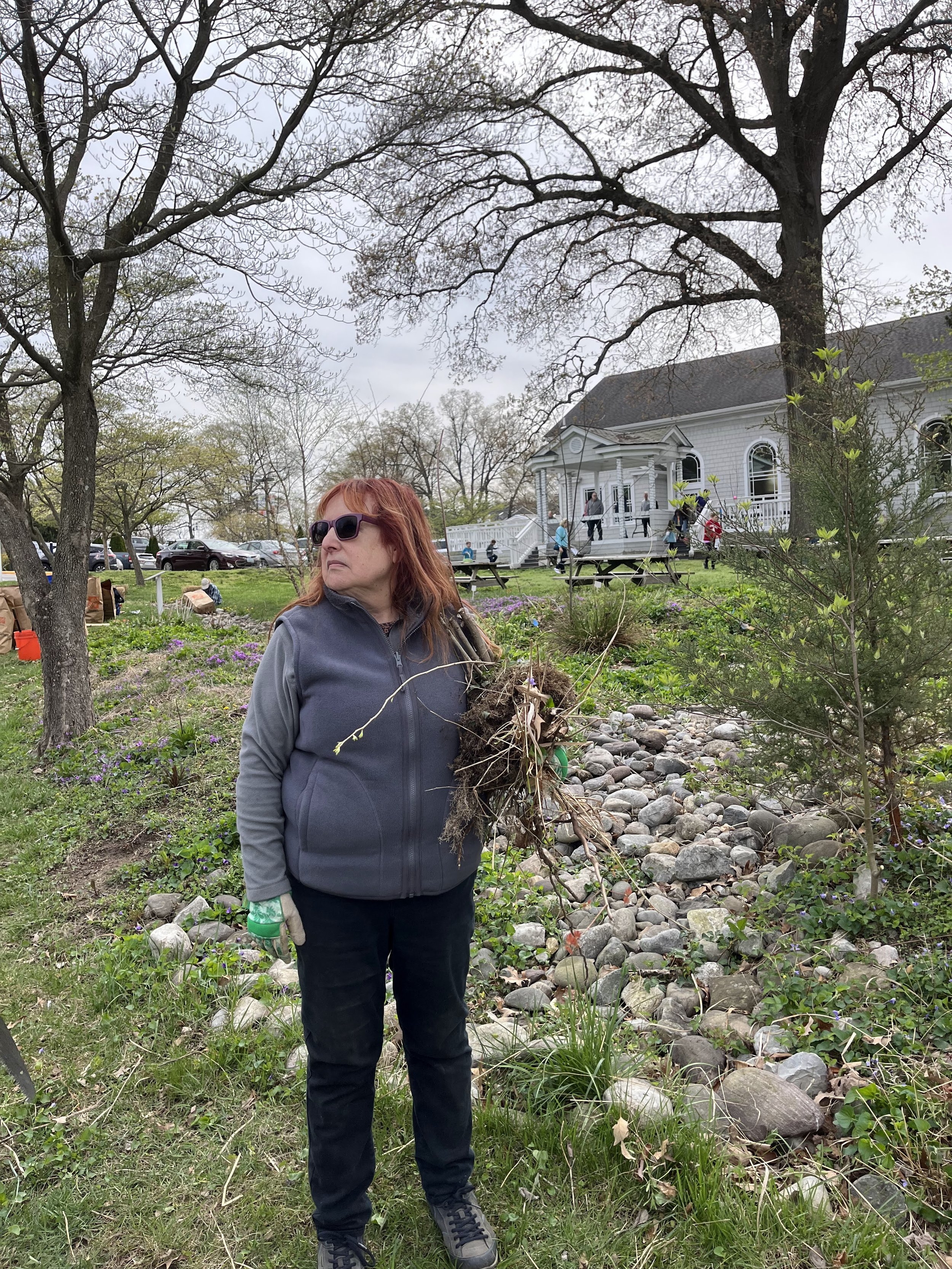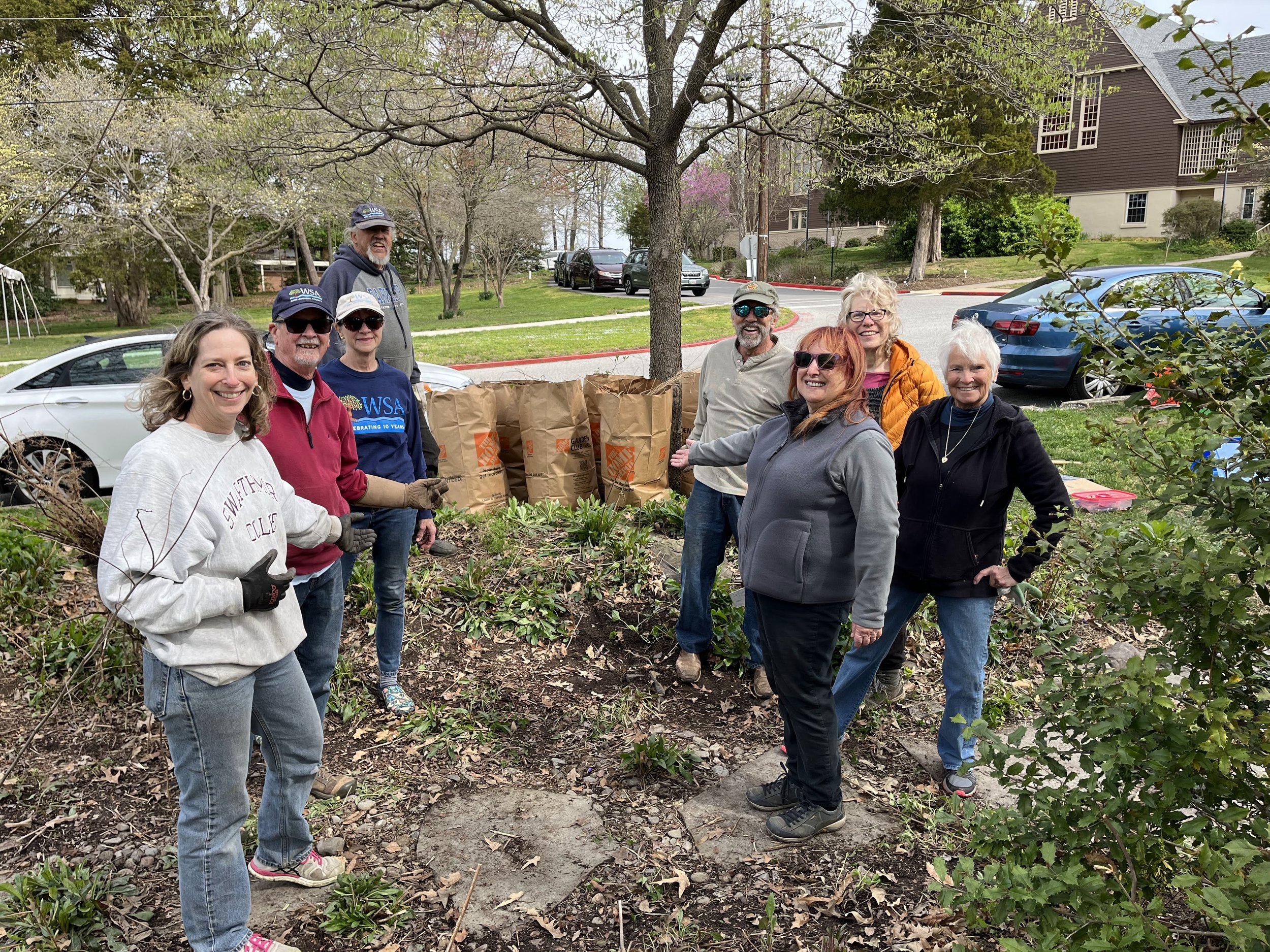On April 8th, 2023, WSA hosted the first ever ANN-ual Day of Maintenance to honor the legacy of Class 1 Watershed Steward, Ann Jackson. You can read all about Ann, her impact, her dedication to project maintenance and more here.
It’s exciting to install a new rainscaping project - the transformation from lawn to native plants feels drastic and inspiring! In contrast, maintenance is a constant. It’s always needed, the weeds keep growing, and the reward can feel smaller.
But that‘s the best part of it! When you consistently maintain a project, you get to know it intimately. You have the chance to observe the insects and other animals enjoying the habitat that the project created. You can see the impact it makes with each rainfall. And every spring, the project blooms and brings joy to all those who see it.
Class 1 Watershed Stewards at the ANN-ual Day of Maintenance: Brad Knopf, Ken Hatch, Lara Mulvaney, Amy Clements, and Lindsay Hollister.
WSA hosted the event in Ann’s community, Olde Severna Park. 33 volunteers from Severna Park to Massachusetts gathered, including:
Ann’s family and relatives- including her husband Mike, who was a key part of planning and pulling off this event!
Ann’s neighbors, including DJ Gile (Class 14)
People from other causes Ann supported, like Bikes for the World
the WSA team, represented by Suzanne, Francesca, and Sara
The crew even included some people who had never met Ann but were touched by her impact.
Together, volunteers worked on projects Ann helped install, including some as far back as 2011. We weeded, raked, trimmed trees, removed invasive plants, and mulched gardens - ensuring they will successfully reduce pollution this spring and summer. And more importantly, we laughed, remembered, and were inspired - ensuring Ann’s legacy will live on through not only her projects, but through the many people who will take action and think of her.
Special thanks to these Watershed Stewards:
Jim MacNicholl - project site leader
Lara Mulvaney - project site leader
Jack Turner - photographer
Amy Clements - project site leader
Lindsay Hollister - project site leader
Brad Knopf - project site leader
We look forward to next year’s ANN-ual Day of Maintenance!
Feeling inspired? try these early spring maintenance tips:
Remove weeds by hand
monthly for the first growing season, then every 3 months or as neededAdd mulch to bare spots (2-3 inches)
Cut back perennials and remove dead growth
For meadow type conservation landscapes, mow once in early spring
